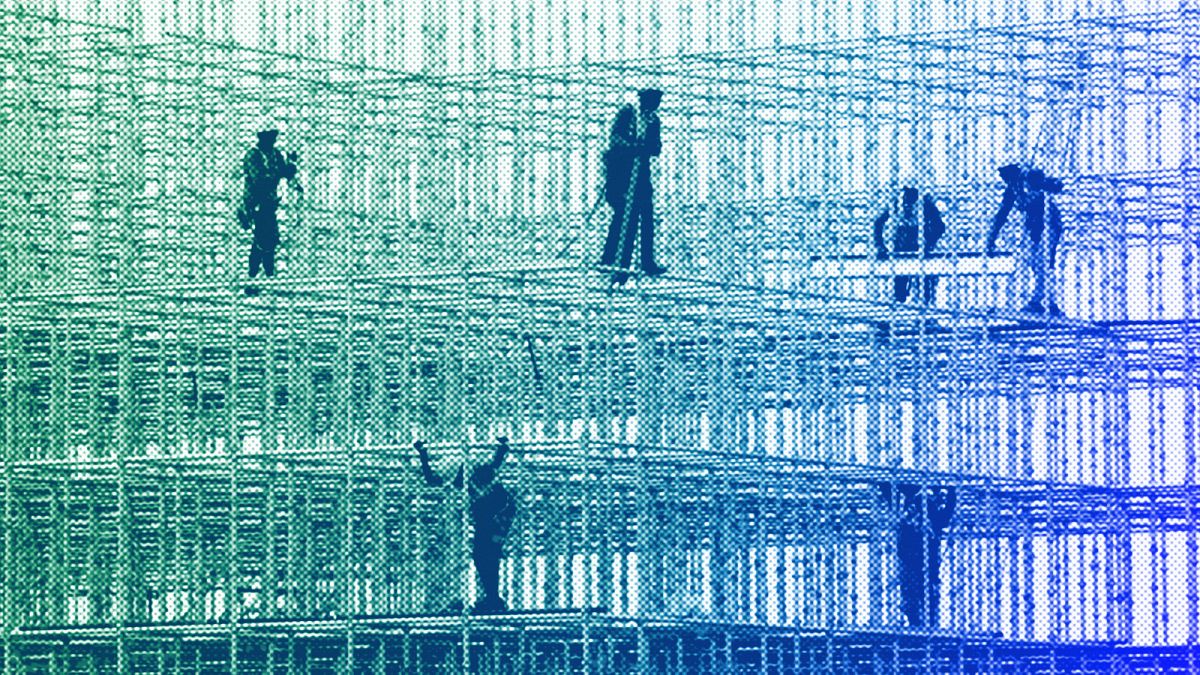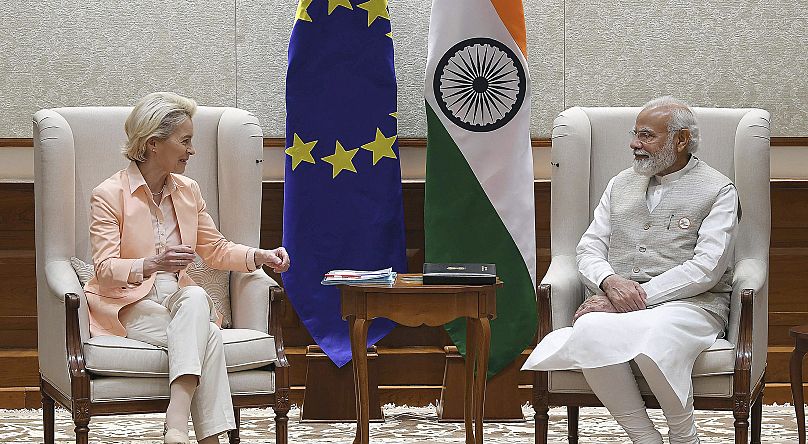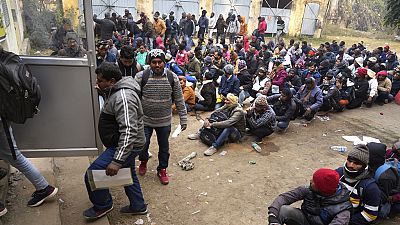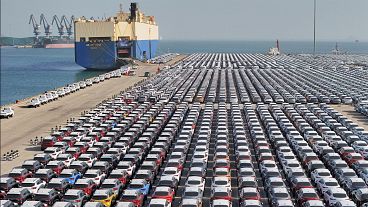As the world moves towards "minilateralism" — meaning, small groups of countries cooperating to tackle collective issues or pursue goals — the IMEC presents the EU with an opportunity to grow its trade and improve its access to global markets, Osama Rizvi writes.
At the G20 leaders summit in September 2023, Narendar Modi, the Prime Minister of India, announced the India-Middle East-Europe Economic Corridor (IMEC) that will run from India to Europe.
But what will this project entail? When will it start? And what are the prospects and challenges it will offer Europe?
The IMEC will work with countries including Saudi Arabia, the United Arab Emirates, Italy, Germany and France along with the European Union and the United States to advance the project.
China did something similar with its various trade route mega projects, like the Regional Comprehensive Economic Corridor (RCEP) and Belt and Road Initiative (BRI). The country is also laying vast rail and road networks to integrate the region in trade further.
Meanwhile, India, an emerging global economy (recently overtaking the UK as the fifth largest economy) is now trying to compete with this reality — and this game of geopolitics represents an opportunity for Europe.
What will IMEC entail?
The IMEC project is part of the wider Partnership for Global Infrastructure and Investment (PGII), which was launched in June 2022 and aims to meet the needs of low and middle-income countries (LMICs).
The 4,800 km-long IMEC will consist of a railroad, ship-to-rail networks, and other transport routes. It will be divided into two parts: the East Corridor, which will connect the Arabian Gulf to India, and the Northern Corridor, connecting the Gulf to Europe.
It will provide a link between famous major ports like Fujairah, Jebel Ali and Abu Dhabi in UAE, Haifa in Israel, and Mundra and Kandla in India, along with ports in Greece (Piraeus), France (Marseille), and Italy (Messina).
To keep in mind modern problems and policy issues, special attention will be given to increasing the efficiency of transport, reducing GHG emissions and generating employment.
The Middle East and the Gulf region have become the centre of the great power game. China’s influence is the strongest and growing every day in the Middle East — an area not only full of oil and gas reserves but also home to important choke points commanding the global economy.
As such, the IMEC will allow Brussels to establish its own influence in the Gulf, thwarting any plans of sole Chinese presence. It is also an opportunity for Europe to de-risk from Beijing and Moscow.
The IMEC also has the potential to reduce the transportation cost from European ports to its connected regions by between 30-40%, as European Commission President Ursula von der Leyen said in her remarks at the PGII event in September 2023 in Delhi.
“It will be the most direct connection to date between India, the Arabian Gulf and Europe: with a rail link that will make trade between India and Europe 40% faster; with an electricity cable and a clean hydrogen pipeline to foster clean energy trade between Asia, the Middle East and Europe; with a high-speed data cable to link some of the most innovative digital ecosystems in the world and create business opportunities all along the way,” von der Leyen stated.
There are a total of eight signatories to the IMEC, which accounts for 40% of the global population and more than half of the world economy. This represents a huge opportunity for the EU to integrate itself further into the future of global economic development.
Obstacles to overcome
The war in the Middle East is the biggest roadblock to the IMEC, as it is expected to result in significant delays in the project by pouring cold water on the progress in the thawing of diplomatic relations between Israel and Saudi Arabia. For Brussels, it will be difficult to navigate these complex geopolitical uncertainties.
Moreover, there is still ambiguity regarding the timeline. Recently, the participants failed to convene a mandatory meeting after 60 days to implement the “action plan” for the IMEC, as agreed in the original G20 meeting.
There isn’t much detail on the financing as well — the development of port connections and railways etc will require billions of euros with estimates noting it could cost up to $8 billion (€7.4bn).
One of the biggest challenges for the EU will be to ensure that the technology, money and other infrastructure that will be established under the IMEC umbrella will not be used to forward or benefit Russia and China’s influence.
Since the Ukrainian war, the role of the Middle East for Russia has grown significantly. The UAE exported $233 million (€216.3m) worth of computer components and communications and electronic equipment to Russia, in the first five months of 2023.
This is a huge increase when compared with $2m in the same period in 2022. On the other hand, China has become the largest buyer of GCC oil and gas.
The geopolitics of the IMEC is intricate as both Saudi Arabia and the UAE — the countries whose ports will play the main part in connectivity and enhancement of trade — have dialogue partner status in SCO and the former is likely to become part of the rising economic bloc, BRICS, while the UAE already accepted the invitation to join.
As the world moves towards "minilateralism" — representing small groups of countries cooperating to tackle collective issues or pursue goals — the IMEC presents the EU with an opportunity to grow its trade and improve its access to global markets.
Osama Rizvi is an economic and energy analyst with a focus on commodities, macroeconomy, geopolitics, and climate change.
At Euronews, we believe all views matter. Contact us at view@euronews.com to send pitches or submissions and be part of the conversation.




